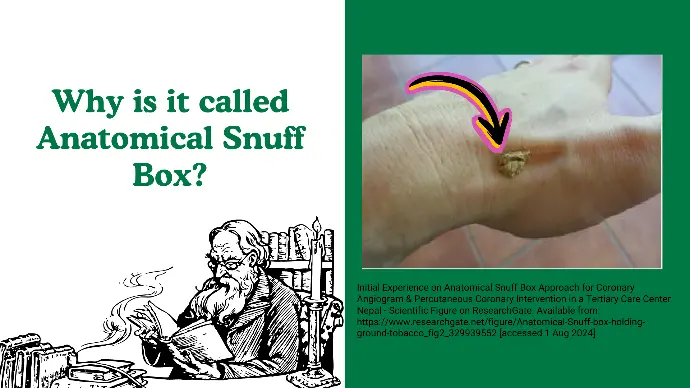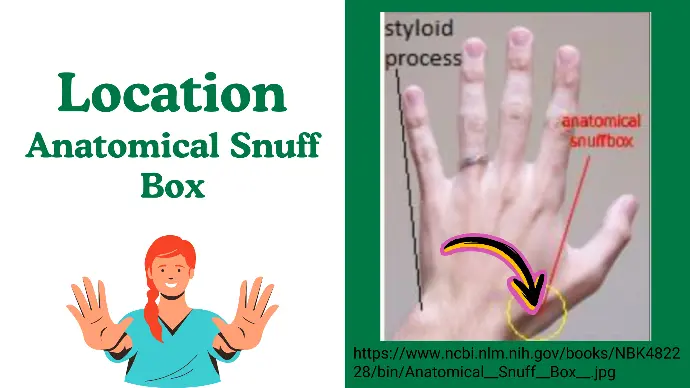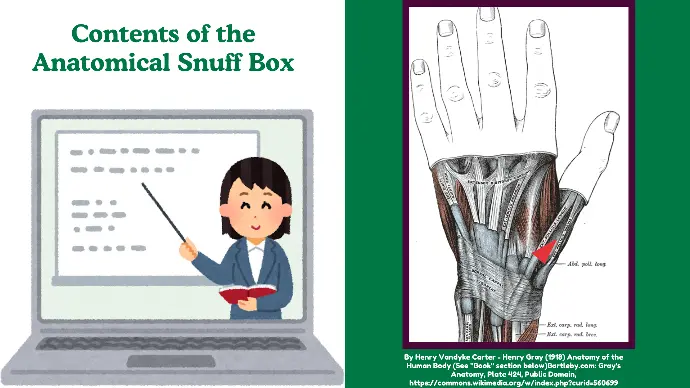Anatomical Snuff Box
Anatomy of the Anatomical Snuff Box: Comprehensive Guide
The anatomical snuff box is a triangular depression located on the lateral aspect of the wrist. This important landmark on the dorsum of the hand is named for its historical use as a place to hold powdered tobacco, or "snuff," before inhalation.

Why is it called Snuff Box?
It is named for its historical use as a place to hold powdered tobacco, or "snuff," before inhalation.
Today, it serves as an important anatomical landmark for both medical professionals and students.

Location of Snuff Box
The anatomical snuff box is found on the lateral side of the wrist. It becomes more pronounced when the thumb is extended, revealing its triangular shape.

Boundaries of the Anatomical Snuff Box

- Lateral Border: Formed by the tendons of the abductor pollicis longus and extensor pollicis brevis.
- Medial Border: Formed by the tendon of the extensor pollicis longus.
- Proximal Border: The styloid process of the radius.
- Floor: Consists of the scaphoid and trapezium bones, and the base of the first metacarpal bone.
- Roof: Covered by the skin and superficial fascia.
Contents of the Anatomical Snuff Box

- Radial Artery: The most significant structure within the snuff box, the radial artery runs obliquely through it. This artery is critical for supplying blood to the hand and is often palpated here to check the radial pulse.
- Superficial Branch of the Radial Nerve: This nerve provides sensory innervation to the dorsal (back) aspect of the hand, allowing for sensation in that area.
- Cephalic Vein: Although it may not always be prominent, the cephalic vein sometimes passes over the snuff box. This superficial vein is often used for intravenous access.